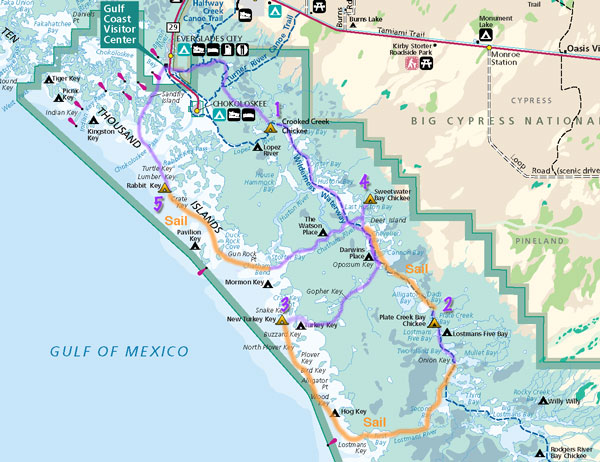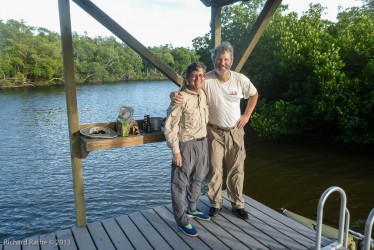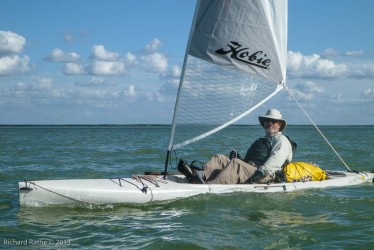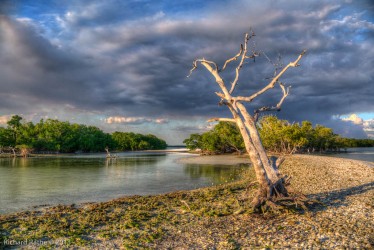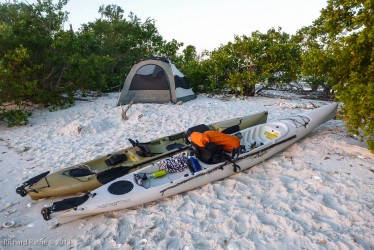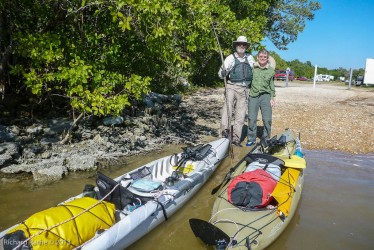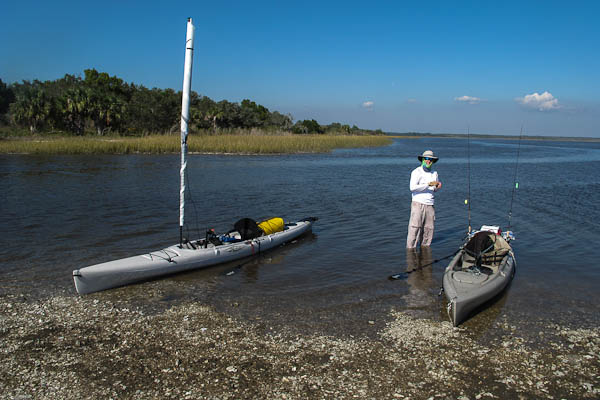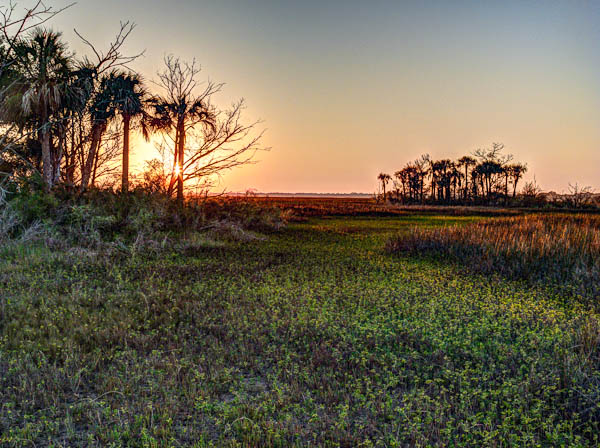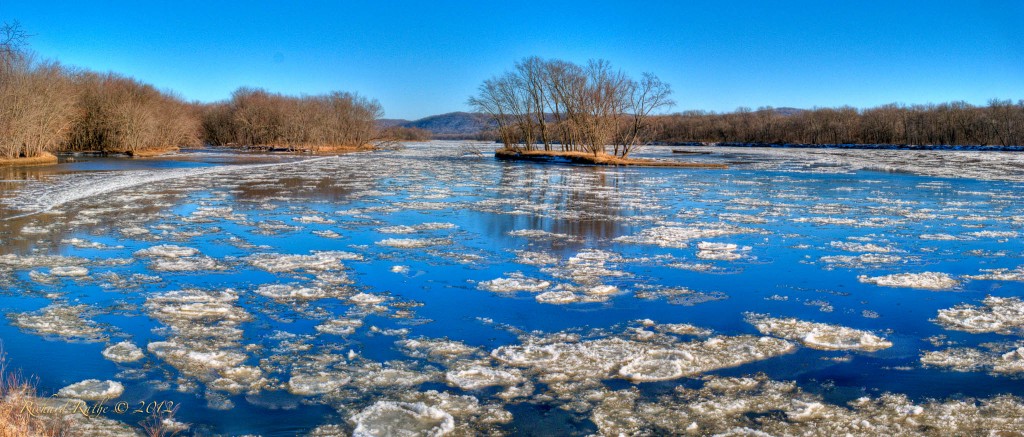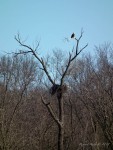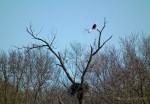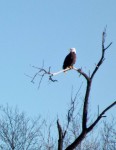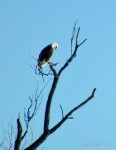Just back from the Everglades with highlights too numerous to relate them all here. For a start I think we’ve hit on the perfect mode of transportation—pedal kayaks with sails! The only downside compared with a canoe is getting on/off the chickees. In every other respect they were superior to canoes and even other types of kayaks. We especially noticed how wind and waves were much less of the threat, and wind could often be put to good use! Unlike the sail canoe rig I’ve used in the past, the kayaks are much safer if they capsize.
Our route was aggressive and included a passage through Gopher Key, which is only possible at high tide. As you can see, we made extensive use of the sails with a prevailing winds from the north and northeast.
I also tried a waterproof camera for the first time with good results, especially video! I’ve edited the clips together into a seven minute long high res feature. Be sure to click on the ‘full screen’ button if available!
It was a joy to be able to keep a camera close at hand and not worry about getting it wet. I also got a few good bird and HDR shots with my other cameras [full gallery], but my photography time was limited because we were having too much fun just exploring! Here are a few highlights…
First day we stayed at the new Crooked Creek Chickee near the head of the Lopez River. In spite of being just off the main channel the site has a secluded feel. It replaces the now defunct chickee on Sunday Bay (which we will miss!). The new chickee is nice with a few new features: high flat roofs, robust ladders, and elevated kitchen shelves.
The next day we sailed for the first time on the large bays along the way to the Plate Creek Chickee. We were excited to return to this historical location that existed before there was a national park. Alas, the original chickee has been razed and replaced by a new one set away from the small island. Another old place we will miss.
We sailed almost the entire next day. It was phenomenal!! Check out the video above to share some of the thrill. Unfortunately, in the heat of the moment getting the sails up, I lost track of my paddle. <frown> It was on a leash trailing behind as the boat took off and the leash failed due to our excessive speed. Ironically this occurred on the upper Lostmans River. Out in the Gulf of Mexico we sailed about a mile off-shore and reached New Turkey Key with plenty of time to explore and take pictures. Along the way I cut a black mangrove pole to replace my paddle. It worked remarkably well!
The next day we waited for the tide to start rising before heading up Charley Creek to reach Gopher Key. This is a magical place with birds everywhere! My conservative estimate is we saw over four hundred White Pelicans soaring, landing and fishing. No Avocets this time, but there were hundreds of small shore birds feeding and about a dozen Roseate Spoonbills. At one point we witnessed an (unsuccessful) attack from a Peregrine Falcon. It only lasted 20-30 seconds, but the ensuing pandemonium was a sight to behold! The falcon flew right over our heads as he left the scene with empty talons.
We had an uneventful exit via Gopher Key Creek and pedaled up to the Sweetwater Chickee. We got out early the next day and caught the end of the outgoing tide to get quickly down to The Watson Place. While there we took the now canonical photo by the sugarcane caldron. We made our way down the lower Chatham River and out to the Gulf. We rested at the river mouth and watched a pair of Dolphins feeding on the incoming tide. On the way we saw or heard several Manatees coming up to breathe.
We got to sail some more on our way to Rabbit Key and our last night on the beach. Along the way we saw more White Pelicans and at least three Sea Turtles. I’m convinced that pedaling and sailing are much better than paddling for seeing wildlife. Waving your arms in the air is probably a bit more threatening. We again arrived with plenty of time to explore and had a small beach fire to keep the bugs away in the evening.
The next day we pedaled our way to Sandfly Pass and back to the Ranger Station. All and all this was an exceptional trip and I am completely enamored with the multi-power Kayaks! We found that we could avoid damaging the drive fins by judicious choice of route. Wind and waves were much less of a problem and even became our ally when we put up the sails!

